Join the VIP Teacher Club!
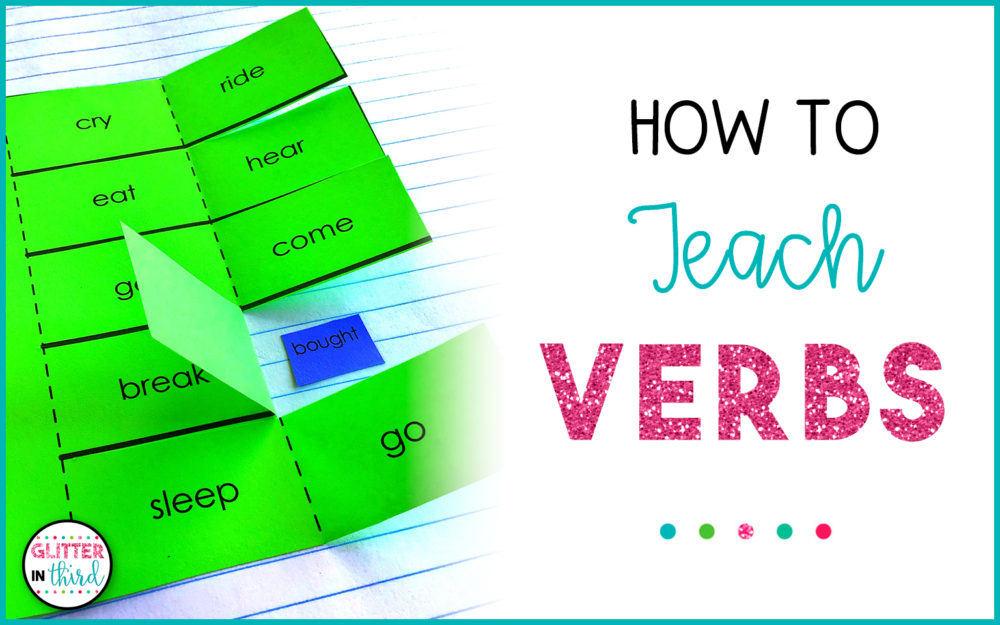
Not sure how to teach verbs?
Whenever I used to teach verbs it felt like I needed to allot half the school year and round up hundreds of different activities in order to get all the different types of verbs covered!
Can you relate?!
Seriously – Action verbs, linking verbs, irregular verbs, verbs that show mental action or possession.
It’s A LOT to consider and plan for!
I want to share with you some activities that you can use to teach ALL types of verbs, and be able to alter and reuse them again and again!

I think it’s important from the very beginning of your verbs unit that your students understand there are different types of verbs.
Too often our students get hung up on action verbs – running, skipping, swimming, etc. – that they struggle to see a verb as anything else.
This Google Classroom resource is a comprehensive, digital resource that focuses on physical actions, mental actions, and states of being.
It goes even further into sorting verbs that you can see and can’t see, as well as opportunities for your students to create their own verbs.
It also touches on past, present, and future tenses and irregular verbs.
All of the activities involving the time tenses, as well as the irregular verbs, are teacher editable so you can swap out any type of verb to reuse over again throughout your verb unit!
You can find this resource here!
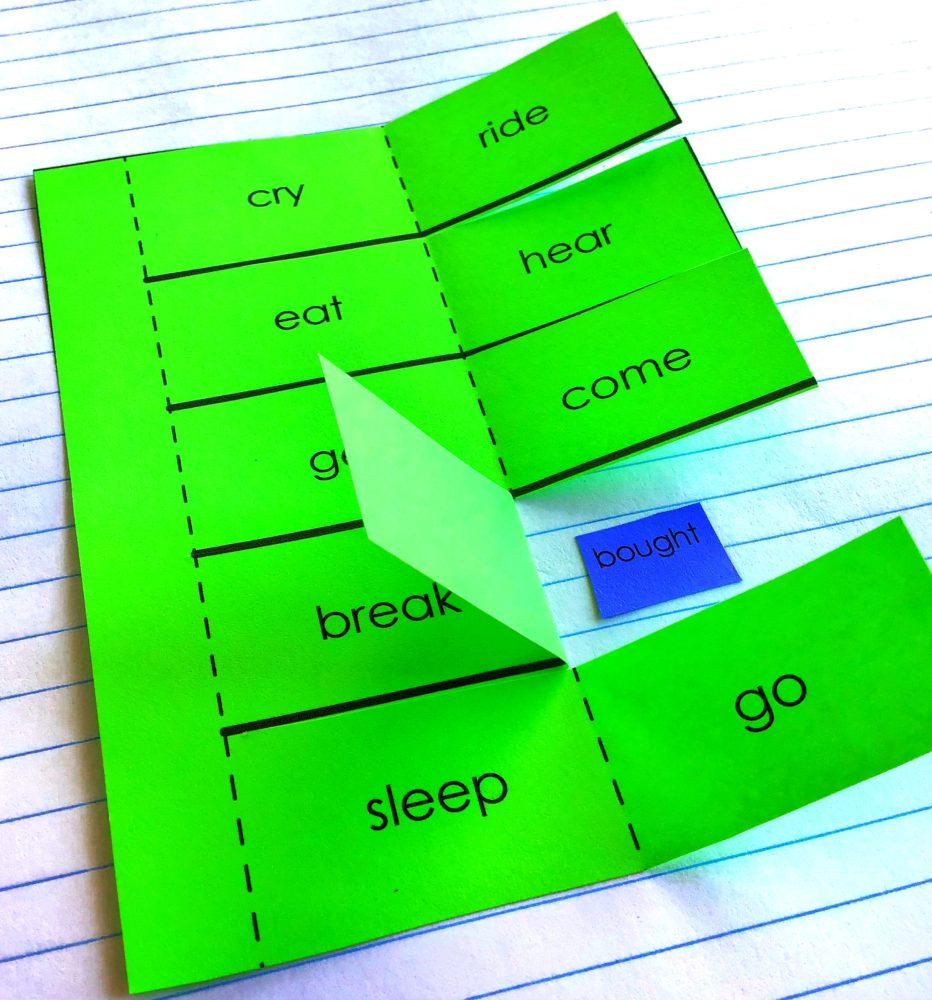
Another comprehensive resource I have to supplement your unit with is an interactive notebook!
It incorporates similar skills and activities as the Google Classroom resource, but focuses on even more sentence creation and sorting verbs from other parts of speech.
There are several activities that would make great small group or partner lessons, too!
Brainstorming verbs in general together, what verbs can be done throughout our different seasons, and writing sentences to describe different given pictures would make for great peer discussion.
The notebook practices past, present, and future tenses, as well as covering the definition and purpose of verbs.
Differentiated, easy to cut for your students, and comes with answer keys to every activity.
This interactive notebook is compatible with EASEL if you’re looking for more digital activities, too!
You can see it here!
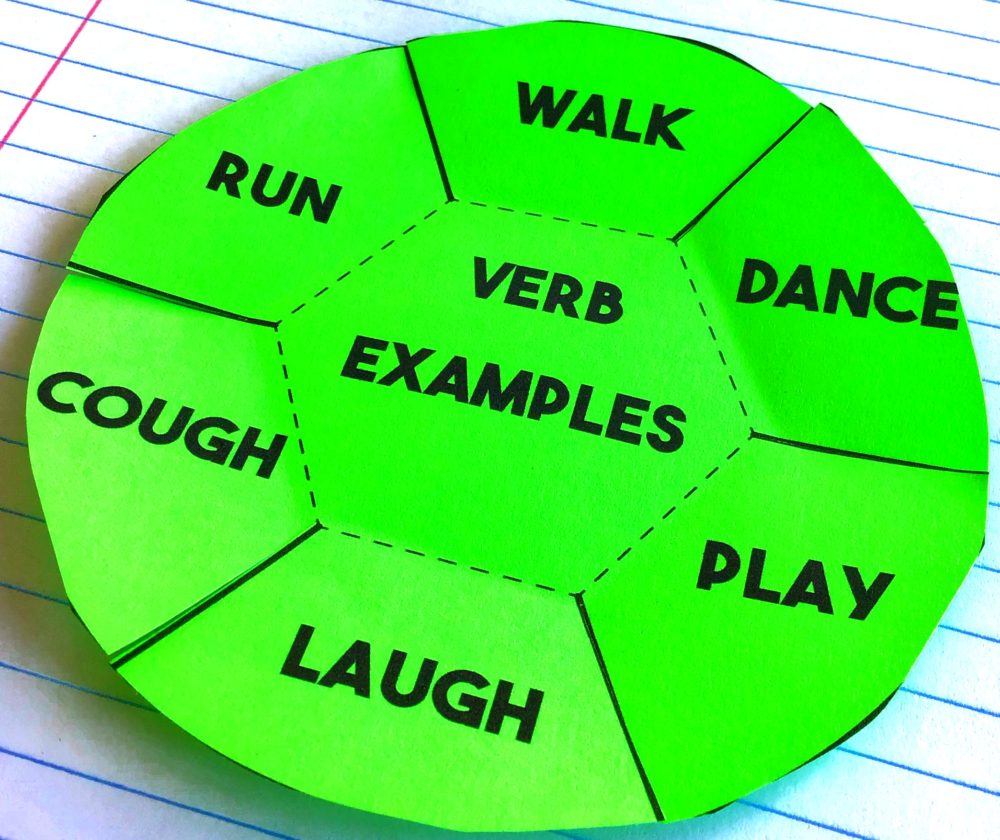
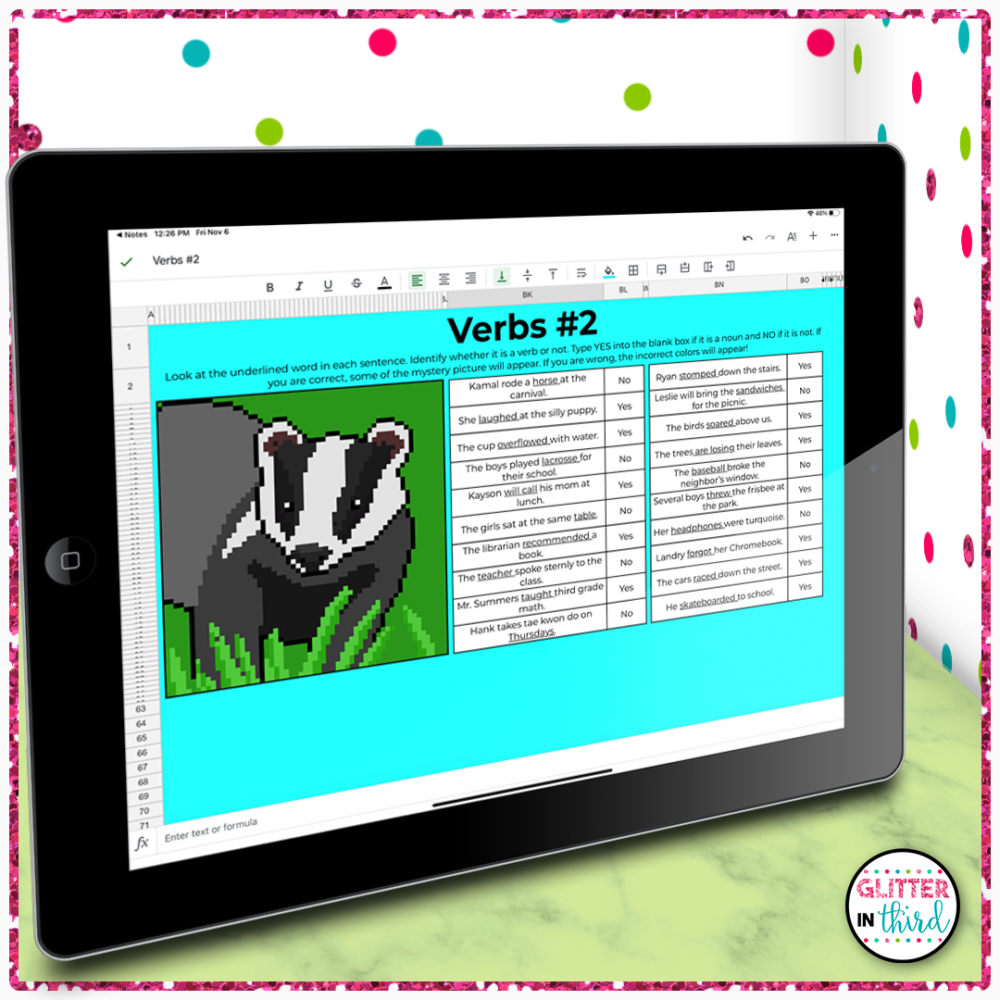
My last digital resource I have for you is always my favorite to share and a student favorite, too!
The resource comes with a total of 5 digital mystery pixels.
Each pixel is a different picture, skills, and set of questions.
As students answer questions correctly, a mystery picture appears!
Each pixel focuses on different skills:
Every pixel comes with its own answer key.
No prep or grading required by you! 🙂
Check out a preview of how the pixels work here.
Not sure what a digital mystery picture is?
I have a FREE one for you!
Fill in your info below to get a reading comprehension digital mystery picture sent right to your inbox!
Before I give you just a few free activity ideas to try out, I can’t stress this enough – It’s SO important that you collaborate with your grade level team, as well as the teachers above and below your grade level to develop consistency in what you’re teaching.
Since there are such a variety of verbs to be learned, your students will benefit the most from having a consistent message year to year.
For example, does your curriculum acknowledge both helping and linking verbs?
Do your state standards touch on modal and auxiliary verbs?
Consider taking some time to complete some build-wide curriculum mapping as you teach verbs and all parts of speech!
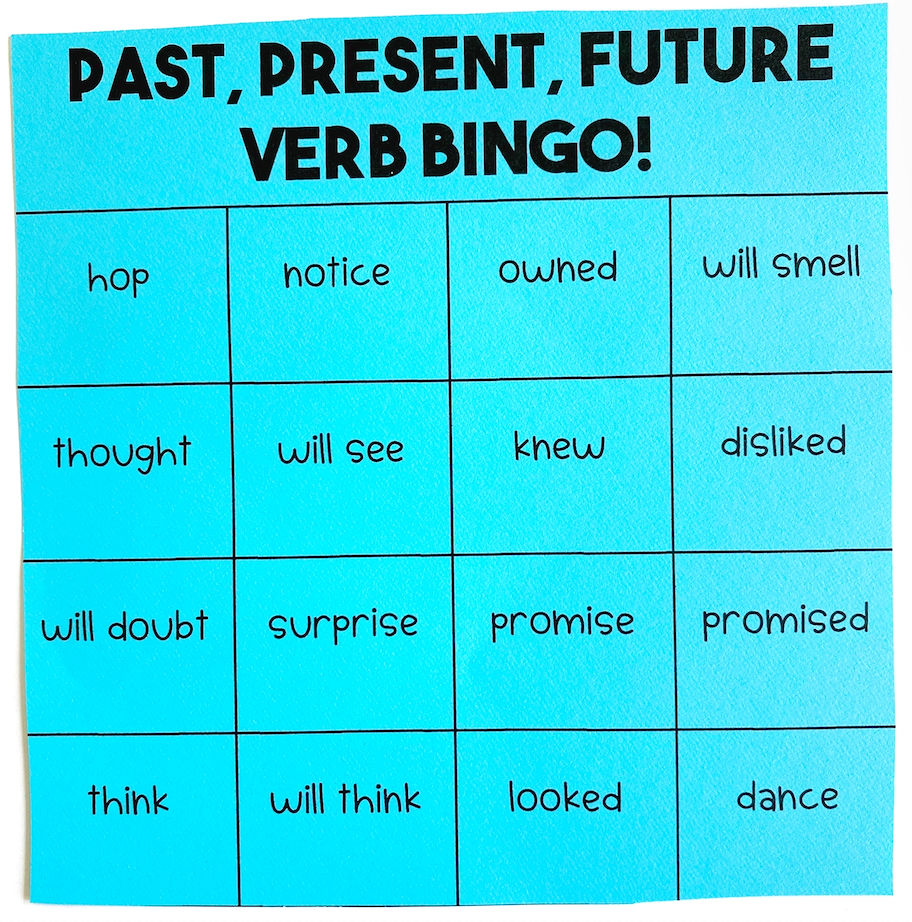
If you follow my blog, you know I’m a sucker for Bingo. 😉
It can be used in SO many different ways!
Here are a few ways you can practice verbs using online generator Bingo cards:
*Tip* – Laminate the cards or place the cards in sheet protectors so your students can mark on them, but keep them reusable!
Create them to fit the skills you want to teach and for any types of verbs you’re working with! 🙂
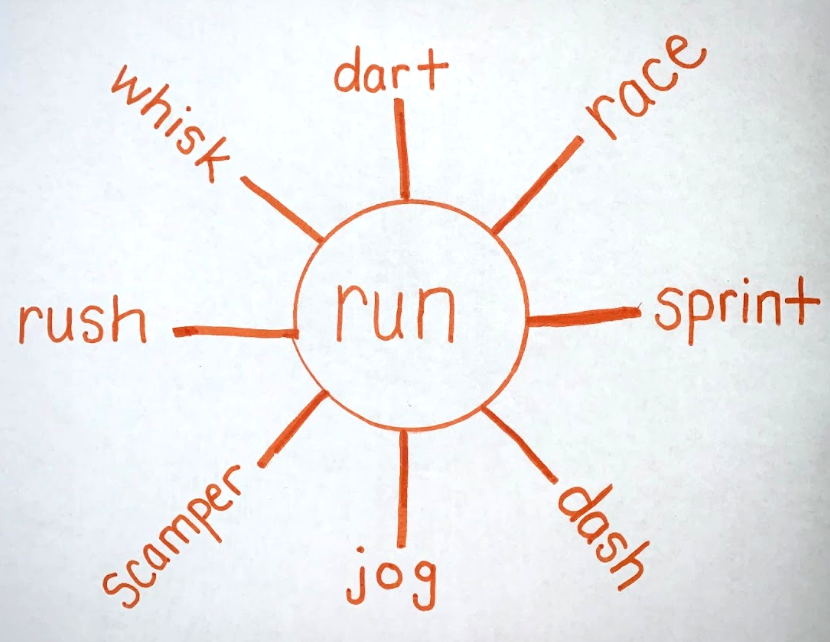
I love encouraging teachers to push their students’ creativity when it comes to their writing – Especially through verbs and adjectives.
Start with one word in the middle of your sun.
From there, have your students create more vivid verbs that could be used to take the place of the plain old boring verb. 😉
This would even make a great whole-class or small group activity!
*Tip* – If you have a dictionary or thesaurus standard to cover, this is a great activity to touch on that!
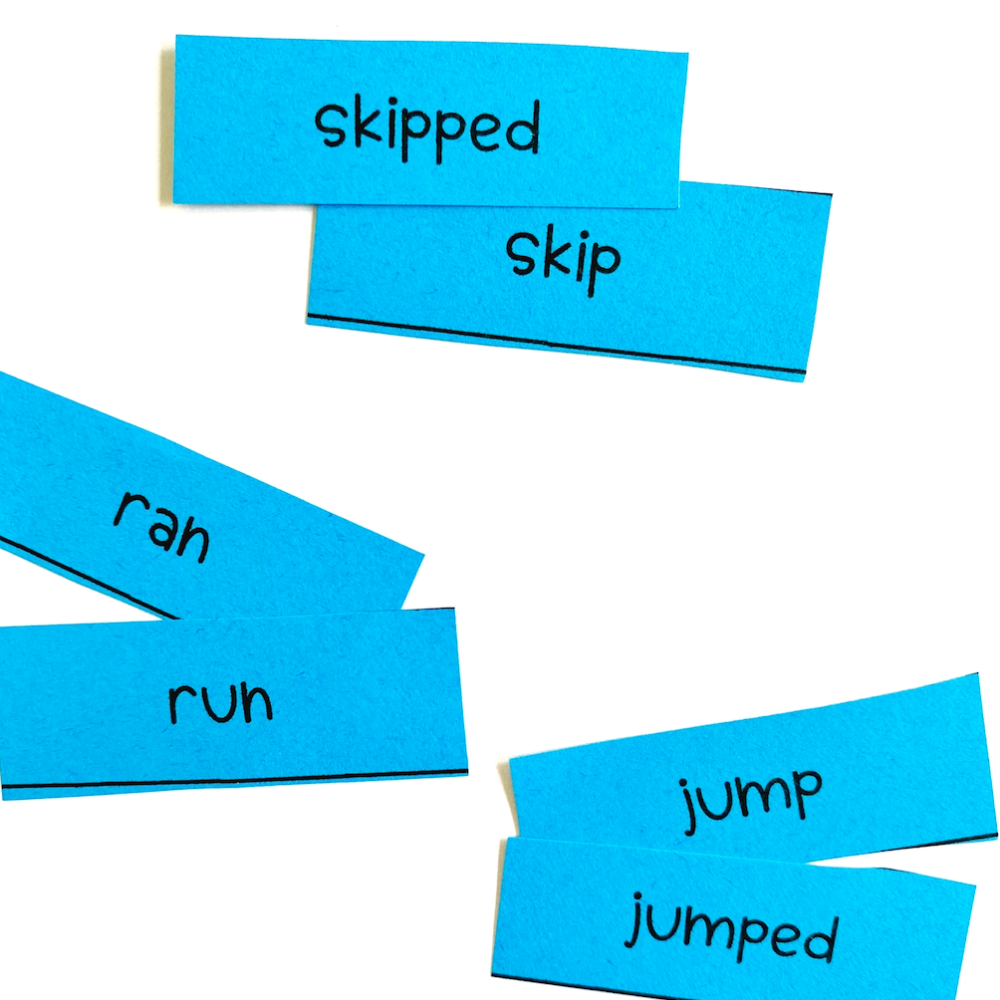
Verbs are one of those parts of speech that the more you work with them, the easier they will come to your students.
Start by creating a list of 20 verbs for your students to sort into past, present, and future tenses or irregular verbs and their past tense.
Once they have a good understanding of the differences, have them play memory with a small group!
Have them pair the time tenses before they can keep the match, or have them pair the irregular verb with its past tense to keep it.
For example, jump/jumped = a match, run/ran = a match.
There are multiple ways to keep them practicing all types of verbs!
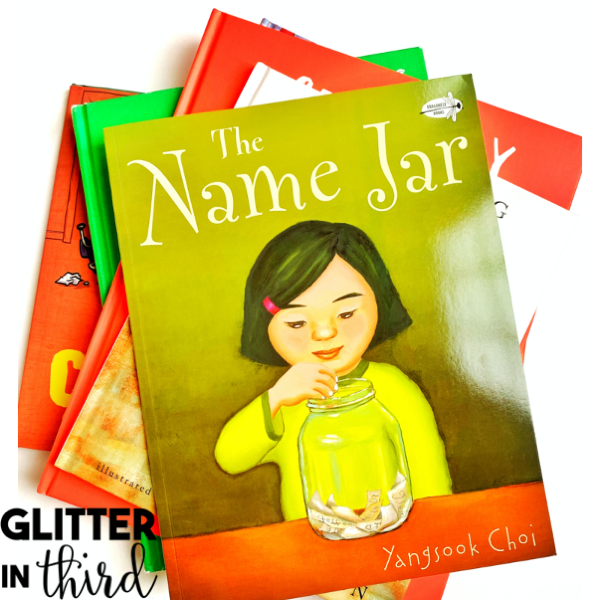
This game will give you and your students some laughs, as well as help them burn off a little energy. 😉
As you read aloud a story, have your students listen for the verbs throughout the story.
As they hear one, they have to act out what that verb is.
A fun story to try this with would be “Slide and Slurp, Scratch and Burp” by Brian P. Cleary.” (Amazon Affiliate link)
There are several state of being type verbs that you could also discuss with your class throughout the story since your students won’t be able to act those out.
Don’t be afraid to change up your skills and verbs, but still do a little rinse and repeat with your activities!
What are some of your favorite activities for teaching all types of verbs?
Feel free to tell me in the comments!

Hey there, I’m Kelly! I I love helping teachers save time with technology and resources so they have more hours in the day to spend with family and friends. Take a look around to find new ideas that you can implement in your classroom today!